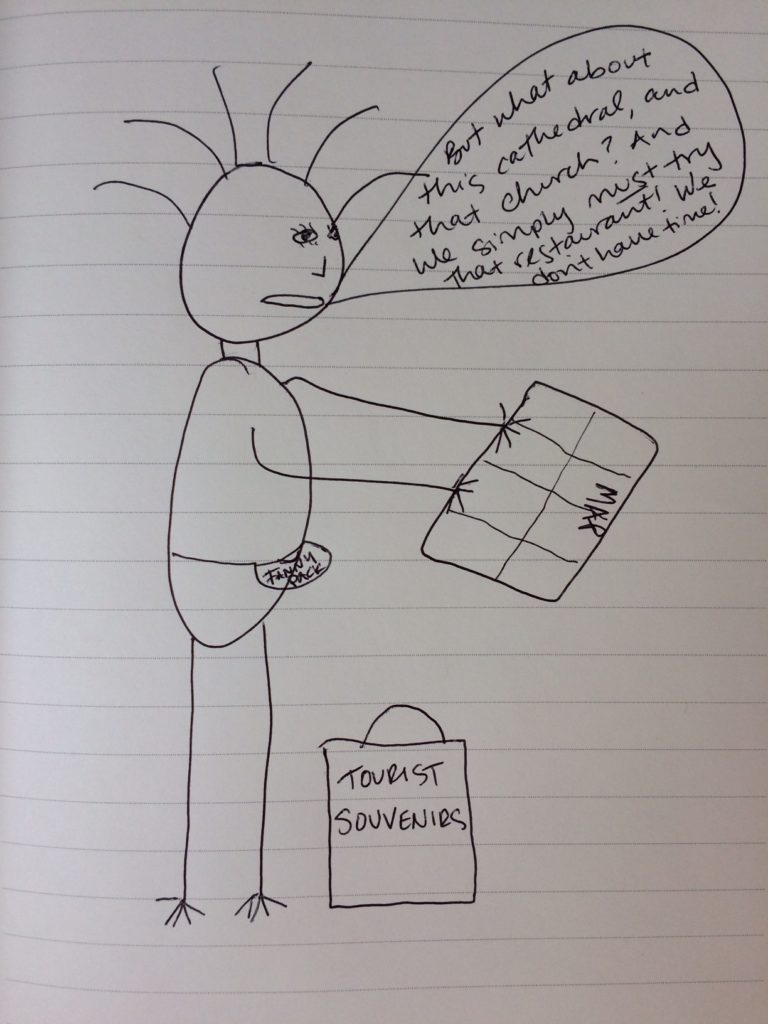Entry: Observed Leisure Activity #2- Temporary habitation movement
This report will detail an additional leisure activity that a large majority of the population engages in: the temporary movement of habitation from one location to another (linguistic term: “travel”).
Travel appears to be a greatly prized and sought after activity. Many of this species will spend half of a full planetary rotation around its sun or more planning travel, which usually requires the engagement of multiple transportation forms (to be detailed in later report) before arriving at the intended destination.
The aim of travel for this species is to physically move their body from one location to another and, for a period of time, to inhabit this new location. Length of travel lasts on average 7-10 full planetary rotations in respect to its star. Travel considerations include weather, temperature, landscape, and infrastructure with distinction being the key in destination decisions. It has been observed that those who normally reside in colder regions will seek out hotter ones for travel destinations, while those who normally reside in hot regions will seek out colder ones. Landscape and infrastructure variations are also important factors with novelty as the ultimate goal. Lastly, travel has been observed as an individual activity, as an intimate partner activity, as a familial unit activity, or as an activity with a group of similar-aged individuals.
Once arrived at the travel destination, the “traveler” then falls into one of two distinct types:
1. The Languid Traveler: The goal of the languid traveler is to do as little as possible. Languid travelers spend much of their habitation time sleeping or consuming liquid and nutrients, and frequently seek out beach destinations where they strip off their outer-shells of fabric and lay without moving for extended periods of time and extreme exposure to their sun.

2. The Overly-Zealous Traveler: Opposite to the languid traveler, the overly-zealous traveler’s aim is to do as much as possible. This type of traveler will wake early and spend each day traveling to different infrastructure sites, provinces, or cities within the vicinity of the original travel destination. They will engage in the consumption of a great variety of nutrients and liquids, and will often collect many types of trinkets, which they carry back to their normal habitation with them once their travel has come to an end.

Note: In accordance with code OBEWH2016 the final report will be submitted on January 1, 2018 to the higher council of extra-planetary research. Objective observations are sent every 7 full rotations of the planet in respect to its star and followed by a short summary of findings as directed in the standardized outline for observational reports presented in Handbook 32.7767.96.7970.
